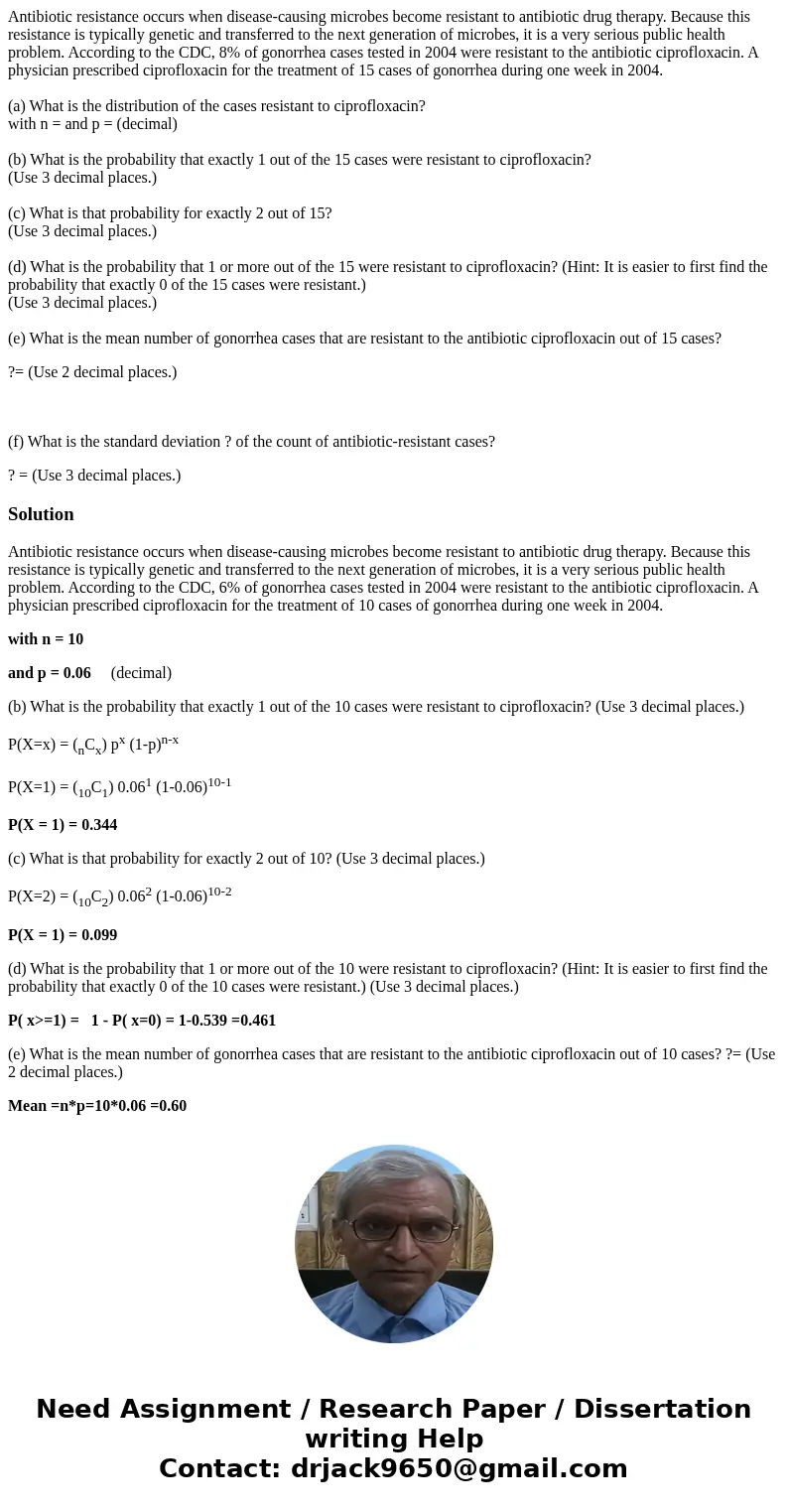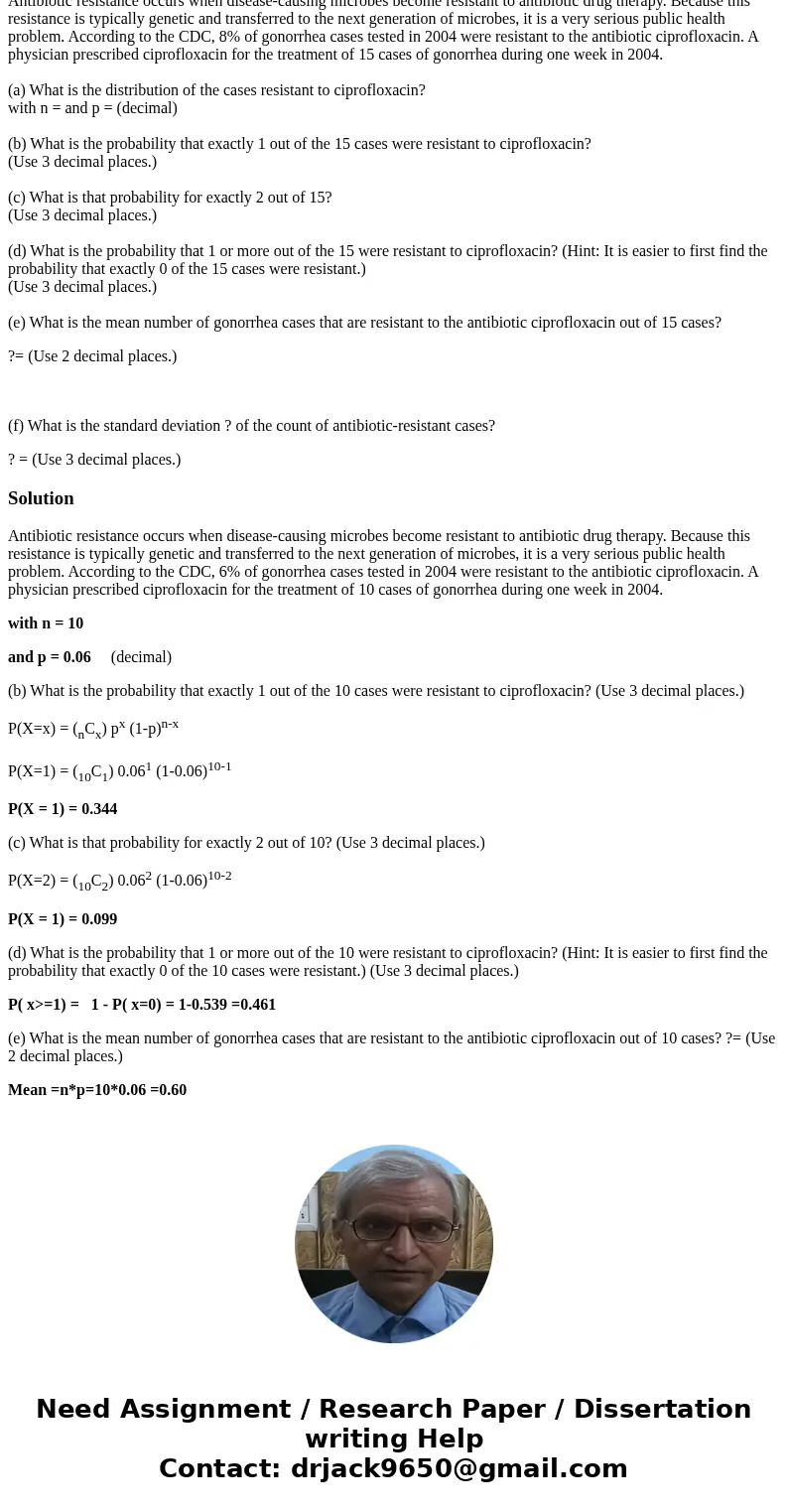Antibiotic resistance occurs when diseasecausing microbes be
Antibiotic resistance occurs when disease-causing microbes become resistant to antibiotic drug therapy. Because this resistance is typically genetic and transferred to the next generation of microbes, it is a very serious public health problem. According to the CDC, 8% of gonorrhea cases tested in 2004 were resistant to the antibiotic ciprofloxacin. A physician prescribed ciprofloxacin for the treatment of 15 cases of gonorrhea during one week in 2004.
(a) What is the distribution of the cases resistant to ciprofloxacin?
with n = and p = (decimal)
(b) What is the probability that exactly 1 out of the 15 cases were resistant to ciprofloxacin?
(Use 3 decimal places.)
(c) What is that probability for exactly 2 out of 15?
(Use 3 decimal places.)
(d) What is the probability that 1 or more out of the 15 were resistant to ciprofloxacin? (Hint: It is easier to first find the probability that exactly 0 of the 15 cases were resistant.)
(Use 3 decimal places.)
(e) What is the mean number of gonorrhea cases that are resistant to the antibiotic ciprofloxacin out of 15 cases?
?= (Use 2 decimal places.)
(f) What is the standard deviation ? of the count of antibiotic-resistant cases?
? = (Use 3 decimal places.)
Solution
Antibiotic resistance occurs when disease-causing microbes become resistant to antibiotic drug therapy. Because this resistance is typically genetic and transferred to the next generation of microbes, it is a very serious public health problem. According to the CDC, 6% of gonorrhea cases tested in 2004 were resistant to the antibiotic ciprofloxacin. A physician prescribed ciprofloxacin for the treatment of 10 cases of gonorrhea during one week in 2004.
with n = 10
and p = 0.06 (decimal)
(b) What is the probability that exactly 1 out of the 10 cases were resistant to ciprofloxacin? (Use 3 decimal places.)
P(X=x) = (nCx) px (1-p)n-x
P(X=1) = (10C1) 0.061 (1-0.06)10-1
P(X = 1) = 0.344
(c) What is that probability for exactly 2 out of 10? (Use 3 decimal places.)
P(X=2) = (10C2) 0.062 (1-0.06)10-2
P(X = 1) = 0.099
(d) What is the probability that 1 or more out of the 10 were resistant to ciprofloxacin? (Hint: It is easier to first find the probability that exactly 0 of the 10 cases were resistant.) (Use 3 decimal places.)
P( x>=1) = 1 - P( x=0) = 1-0.539 =0.461
(e) What is the mean number of gonorrhea cases that are resistant to the antibiotic ciprofloxacin out of 10 cases? ?= (Use 2 decimal places.)
Mean =n*p=10*0.06 =0.60


 Homework Sourse
Homework Sourse